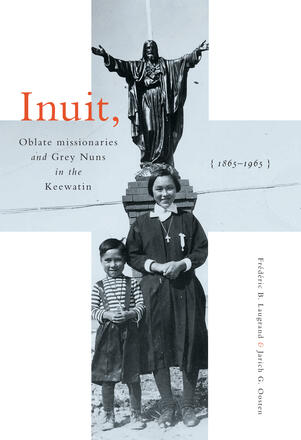
Inuit, Oblate Missionaries, and Grey Nuns in the Keewatin, 1865-1965
A lively introduction to an encounter between two completely different civilizations in the context of Christianization, hospitalization, and education.
Description
Over the century between the first Oblate mission to the Canadian central Arctic in 1867 and the radical shifts brought about by Vatican II, the region was the site of complex interactions between Inuit, Oblate missionaries, and Grey Nuns – interactions that have not yet received the attention they deserve. Enriching archival sources with oral testimony, Frédéric Laugrand and Jarich Oosten provide an in-depth analysis of conversion, medical care, education, and vocation in the Keewatin region of the Northwest Territories. They show that while Christianity was adopted by the Inuit and major transformations occurred, the Oblates and the Grey Nuns did not eradicate the old traditions or assimilate the Inuit, who were caught up in a process they could not yet fully understand. The study begins with the first contact Inuit had with Christianity in the Keewatin region and ends in the mid-1960s, when an Inuk woman joined the Grey Nuns and two Inuit brothers became Oblate missionaries. Bringing together many different voices, perspectives, and experiences, and emphasizing the value of multivocality in understanding this complex period of Inuit history, Inuit, Oblate Missionaries, and Grey Nuns in the Keewatin, 1865–1965 highlights the subtle nuances of a long and complex interaction, showing how salvation and suffering were intertwined.
Reviews
"As important as this volume is as social historical narrative, of at least equal import is its presentation of how the Inuit and the clergy perceived, resisted, and appreciated each other's cultures. In virtually every chapter, Inuit voices are given equal treatment with those of the missionaries." ARCTIC